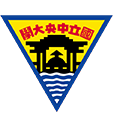食人之界-梁廷毓個展

食人之界 - 梁廷毓 個展
The Territory of Anthropophagus:Liang Ting-Yu Solo Exhibition
時間|2023年3月14日(二)-4月29日(六)
地點|中央大學藝文中心(桃園市中大路300號中正圖書館1樓)
開放|10:00-17:00(周日至周一及國定例假日休)
茶會|3月14日 10:30
導覽|3月14日 11:00
放映活動|斷頭河影展
場次一|3月14日15:00 -17:00(含映後分享)
放映片單|斷頭之河;襲奪之河;襲奪灣
場次二|3月14日18:00 -20:00(含映後分享)
放映片單|槍砲、頭顱與骸骨;顱落之地;斷頭之谷
地點|中央大學107電影院 (人文社會科學大樓)
展覽講座|
講者|吳學明(國立中央大學客家語文暨社會科學學系榮譽教授);梁廷毓(藝術家)
時間|4月20日14:40 -16:40
地點|中央大學藝文中心107電影院(人文社會科學大樓)
活動流程|
14:00-14:30 展場導覽
14:30-14:40 移動至107電影院講座現場
14:40-16:40 展覽講座與QA
展覽簡介|
同類相殘者(Cannibals)一詞在近世之後被賦予了明確意義,使用於殖民者遭逢到的難纏族類,以及被視為抵制、挑釁外地商人和定居者的非人野獸。19世紀發生於北台灣淺山地帶漢人武裝聚落的食人行為,在殖民者眼中同樣令人無法直視。這一處「食人之界」,在本展覽中指向漢人侵墾、移住歷史上,處在界線另一端原住民群體的反視,但也不僅如此。作為「斷頭河計畫」的一部分,延續藝術家梁廷毓過去的《番肉考》(众藝術Zone Art,2018),以及〈龍潭、關西地區的「食番肉」記憶〉(第十屆客家文化傳承與發展學術研討會,2019)等文論及展演發表。圍繞在北臺灣淺山地帶的「食番肉」傳聞,除了對不同語言權力的歷史文本背後之觀察者視角的重新演繹,也藉由客家、閩南、原住民人群之間關於食人者(anthropophagus)的敘事,在視覺、氣味、口感、觸感等感官記憶(sensory memory)之口述歷史取徑,藉由影像、裝置等方式,推測在地者、當事者(閩、客居民)傳述的主觀經驗和現場性描述,進行肉塊、頭顱、屍骨等「非人之物」作為歷史行動者的史學編撰,以及地理空間中的鬼魅、食人史和定居殖民思維之間的潛在聯繫。
藝術家簡介|
梁廷毓,藝術創作者,國立臺北藝術大學藝術跨領域研究所碩士。研究及創作聚焦於 計畫型藝術、鬼魅論述的方法學、問題性形構和相 關論題的研發與實踐,亦關注晚近歷史轉型正義、非人轉向趨勢中的泛靈論與原住民歷史書寫之問 題。主要匯合跨學科的地方研究,以計畫性的藝術行動、複合媒體,並以動態影像集、製圖、書寫的方式,進行現階段的藝術計畫。創作研究則以研討會、工作坊、文論的形式發表於文化研究、歷史學、人類學等相關領域之學刊與討論場合。
Exhibition Statement|
Vibrantly defined since the 16th century, the so-called cannibals refer to the difficult ones encountered by the coloniser, the 'inhuman beasts’ resisting and provoking foreign merchants and settlers. To the coloniser, it was no excuse that incidents of cannibalism occurred in the shallow mountains residing armed Han people. In the exhibition, the realm of cannibalism refers to the invasive cultivation of land and historical migration of the Han people from the subtly critical perspective of the indigenous on the other end of the border. But that's not all.As a part of the The Beheaded Stream Art Project, previous papers and works published by artist Liang Ting-Yu include The History of Anthropophagy (2018, Zone Art) and Memories of Savage Flesh Eating in Longtan and Kansai Shallow Mountain Regions of Northern Taiwan (2019, the 10th Hakka Cultural Inheritance and Development Academic Conference). Through reinterpreting Chinese, English, and Japanese historical texts and retracing sensory memories of sight, smell, and touch based on oral history, the artist observes the anthropophagus narrative between the Hakka, the Min, and the indigenous, and the flesh-eating rumours surrounding the shallow mountains of northern Taiwan. In the form of film and installation, Liang’s work investigates the live recounts and subjective views of the local Min and Hakka involved, as well as the non-human objects such as flesh chunks, skulls and skeletons. As a historical activist, the artist drafts a historiographical compilation exploring the interconnection between phantoms of local geographies, the cannibal history, and the colonial thinking of residing settlers.
Artist|
Liang Ting-Yu is a graduate of the Graduate Institute of Trans-disciplinary Arts at the National Taipei University of the Arts. His research and artistic creation focus on the methodology and the problematic formation of project-based art and ghostly discourse, the development and practice of related topics, as well as on the issues of transitional justice, animism in the trend of the tradition to the ‘non-human’ in contemporary history and the writing of indigenous history. His current project mainly focuses on the integration of interdisciplinary local studies in the forms of project-based art actions and mixed media, collections of moving images, research and inspection of death, spiritual encounters, mapping and writing. Liang’s research is published in seminars, workshops and essays in journals and discussion forums in cultural studies, history, anthropology and other related fields.
主辦單位|國立中央大學人文藝術中心
協辦單位|桃園市政府文化局
特別感謝|財團法人鴻梅文化藝術基金會、藝術家涂維政





